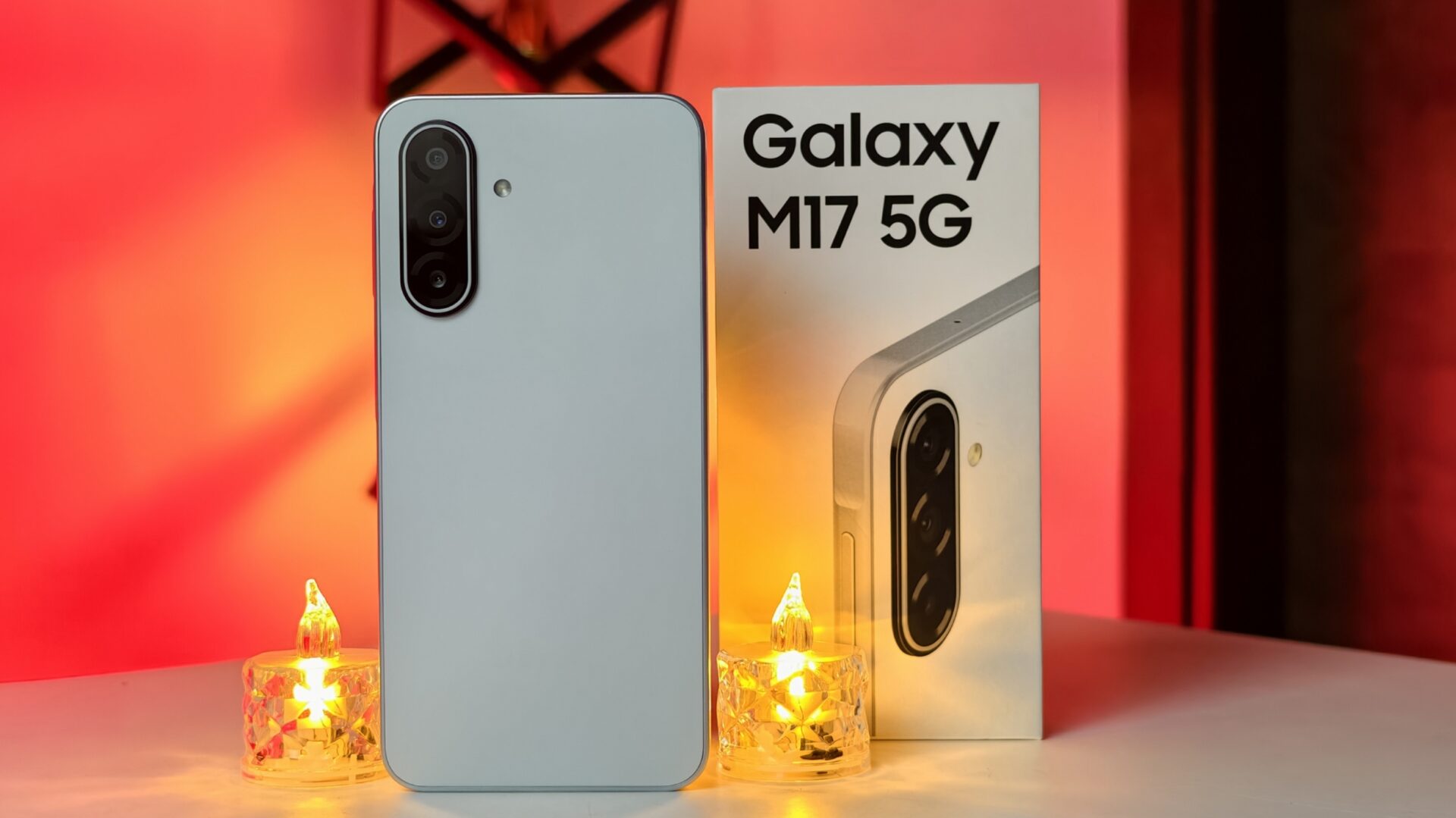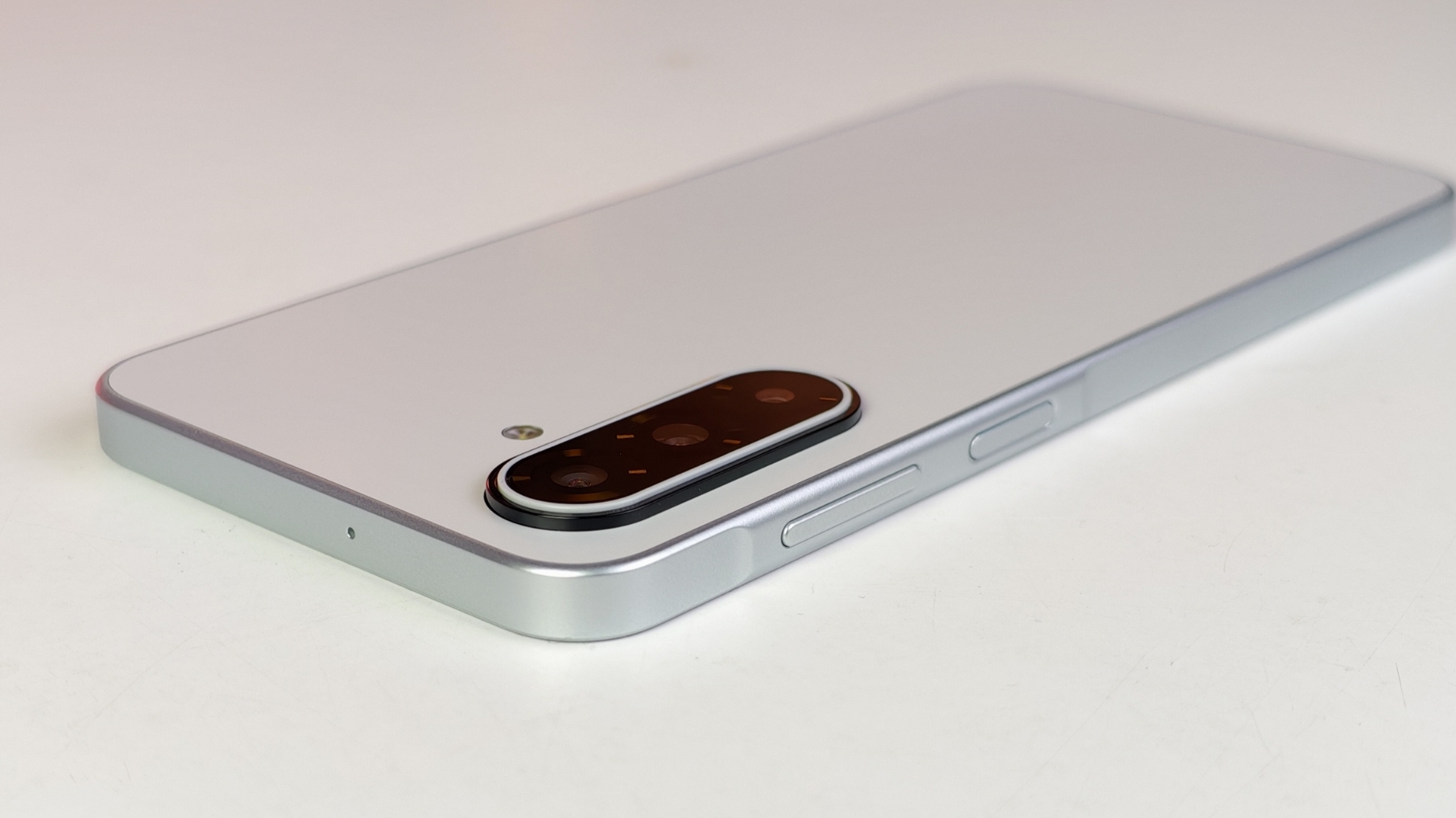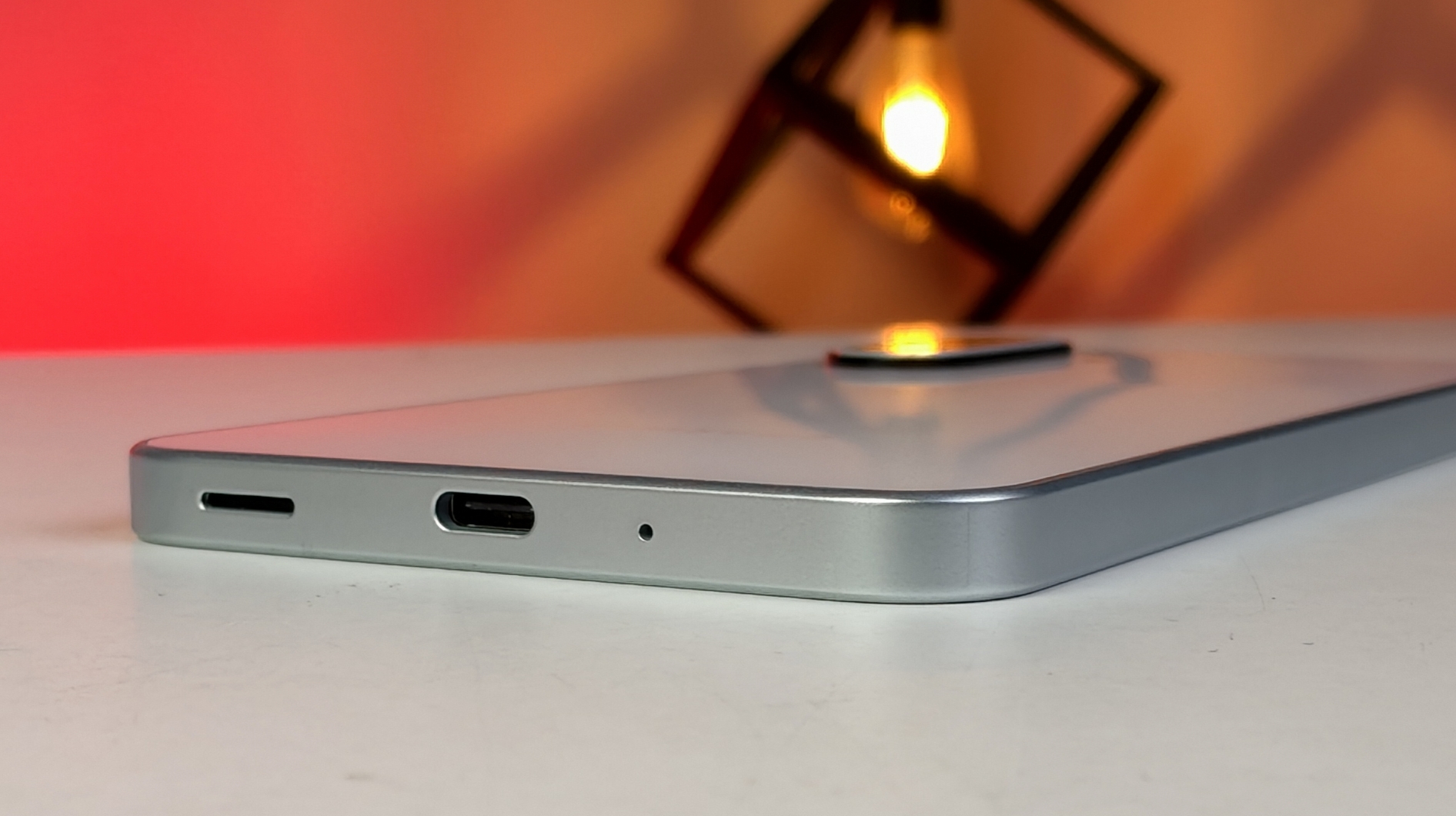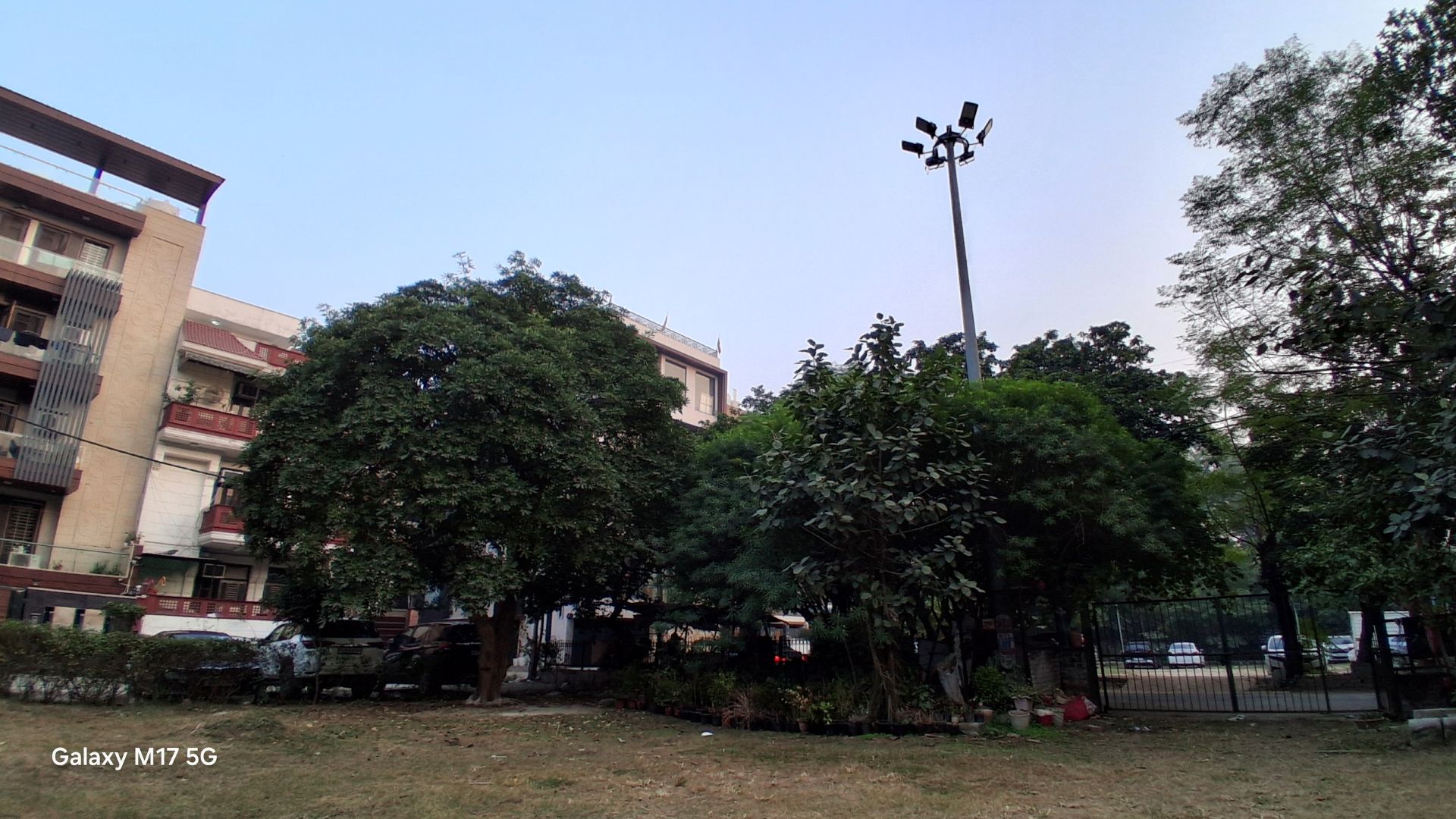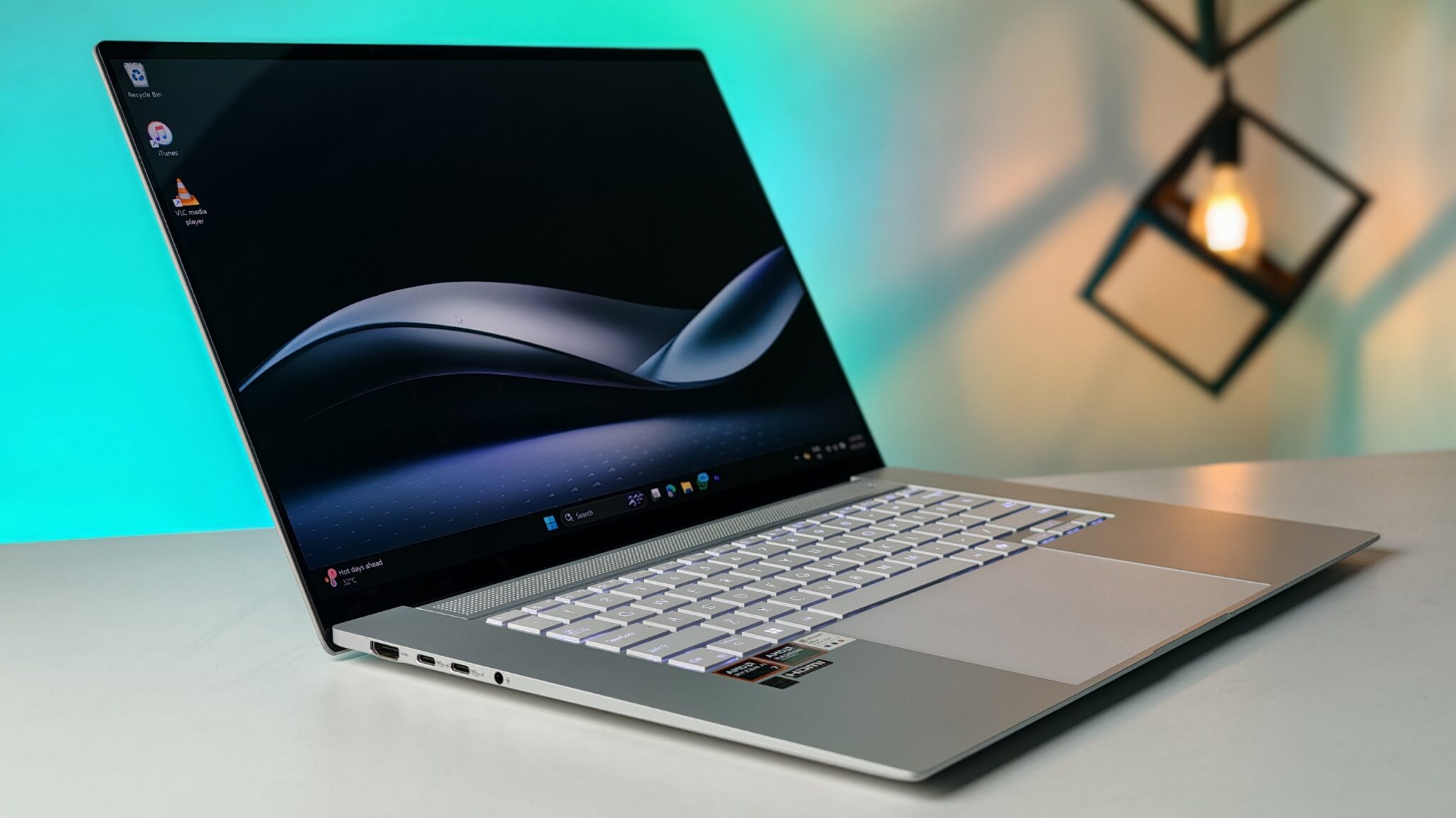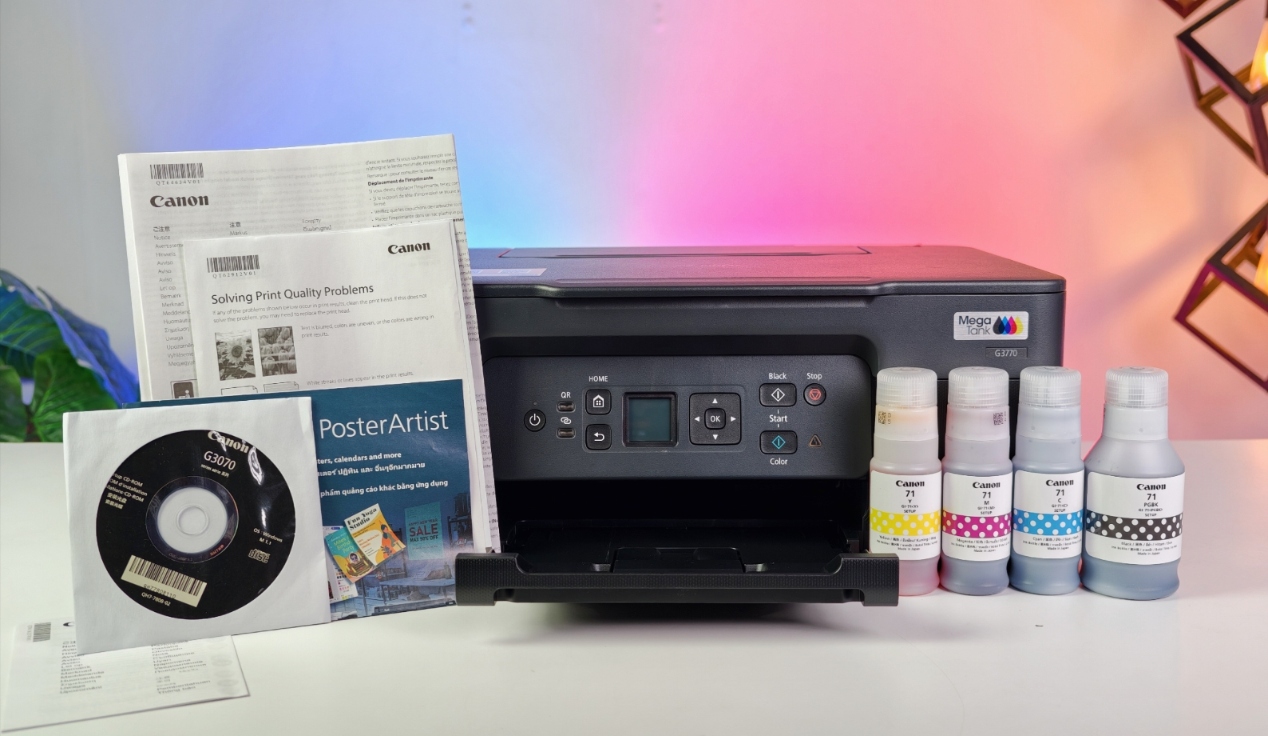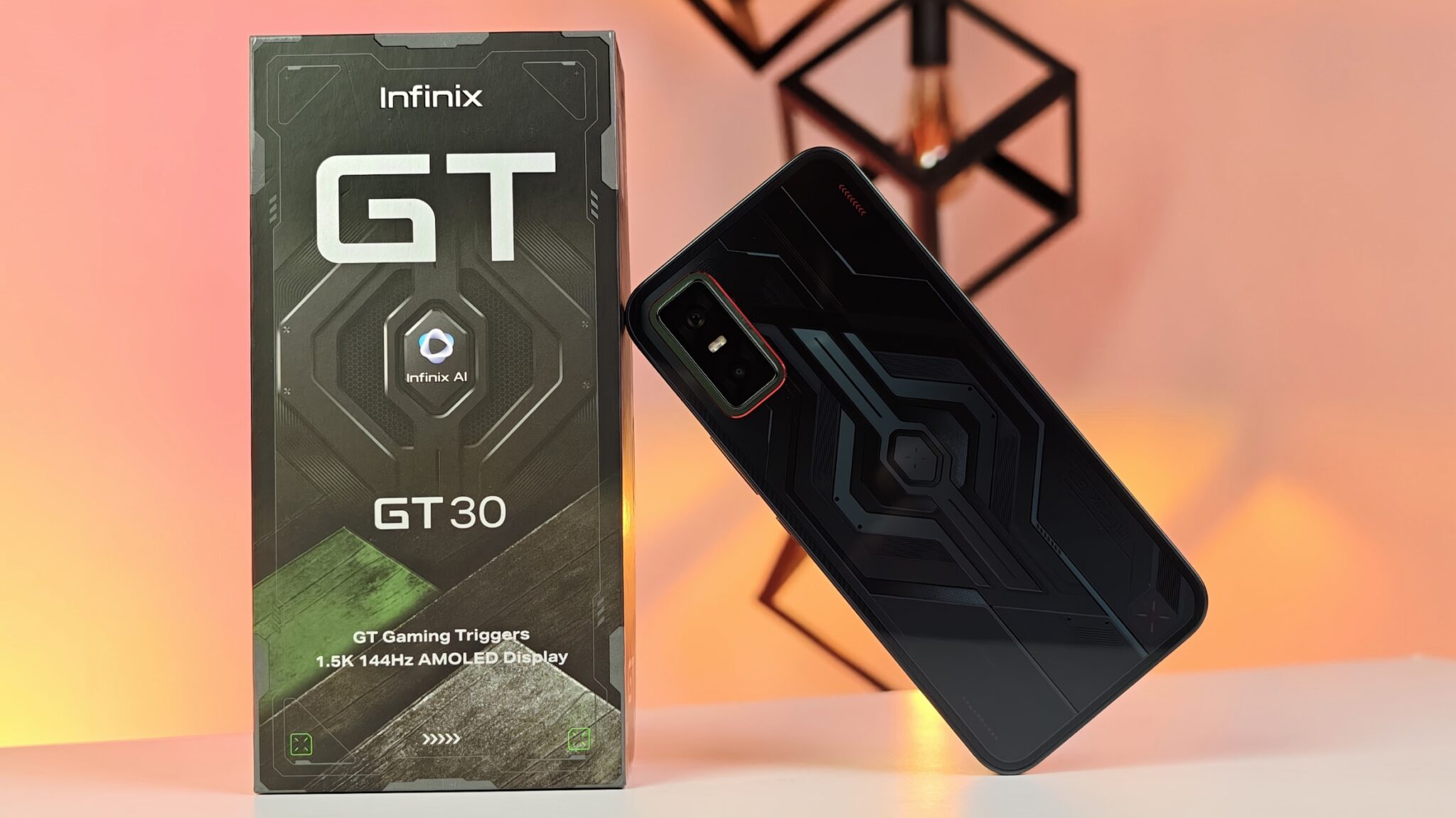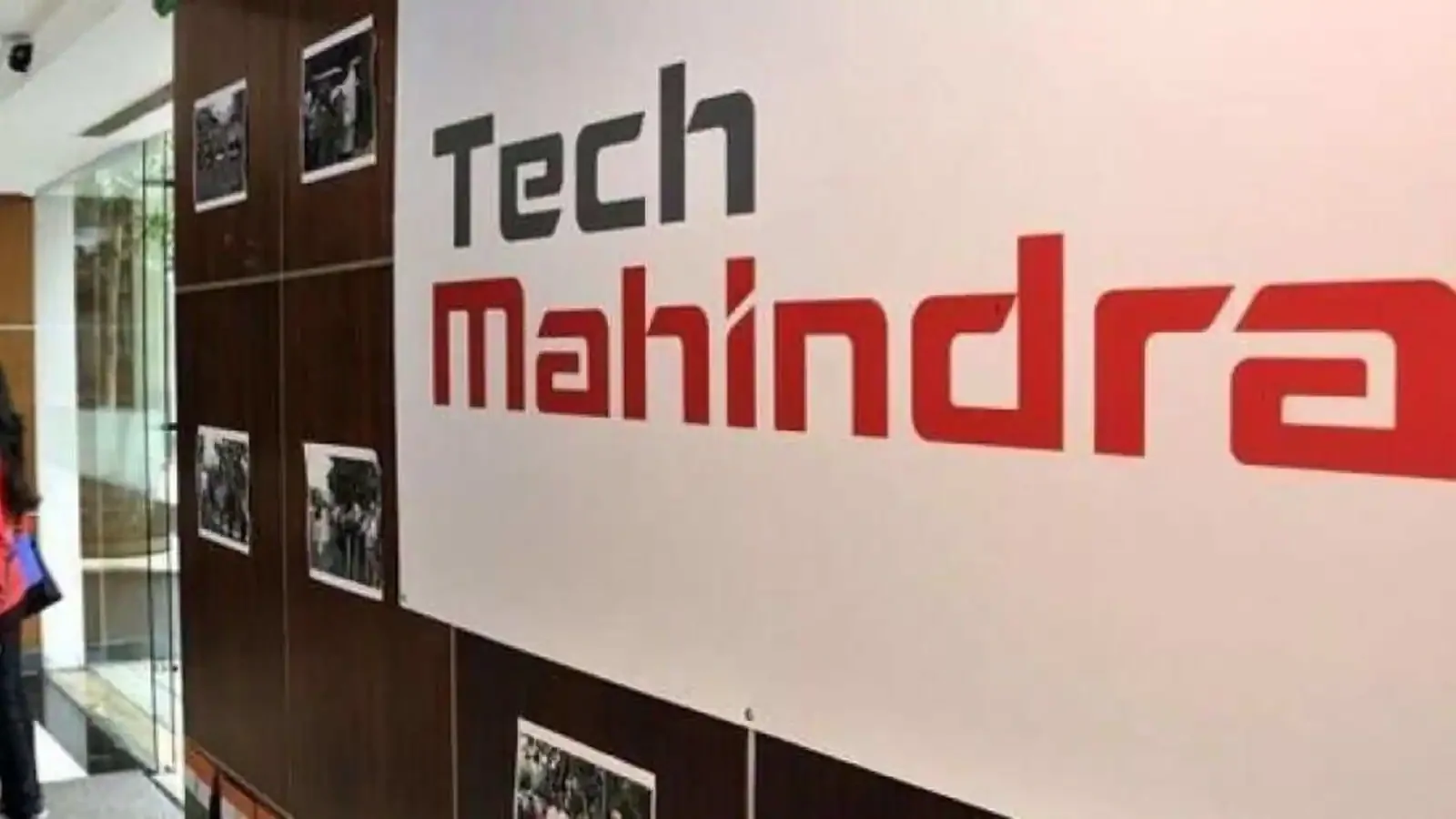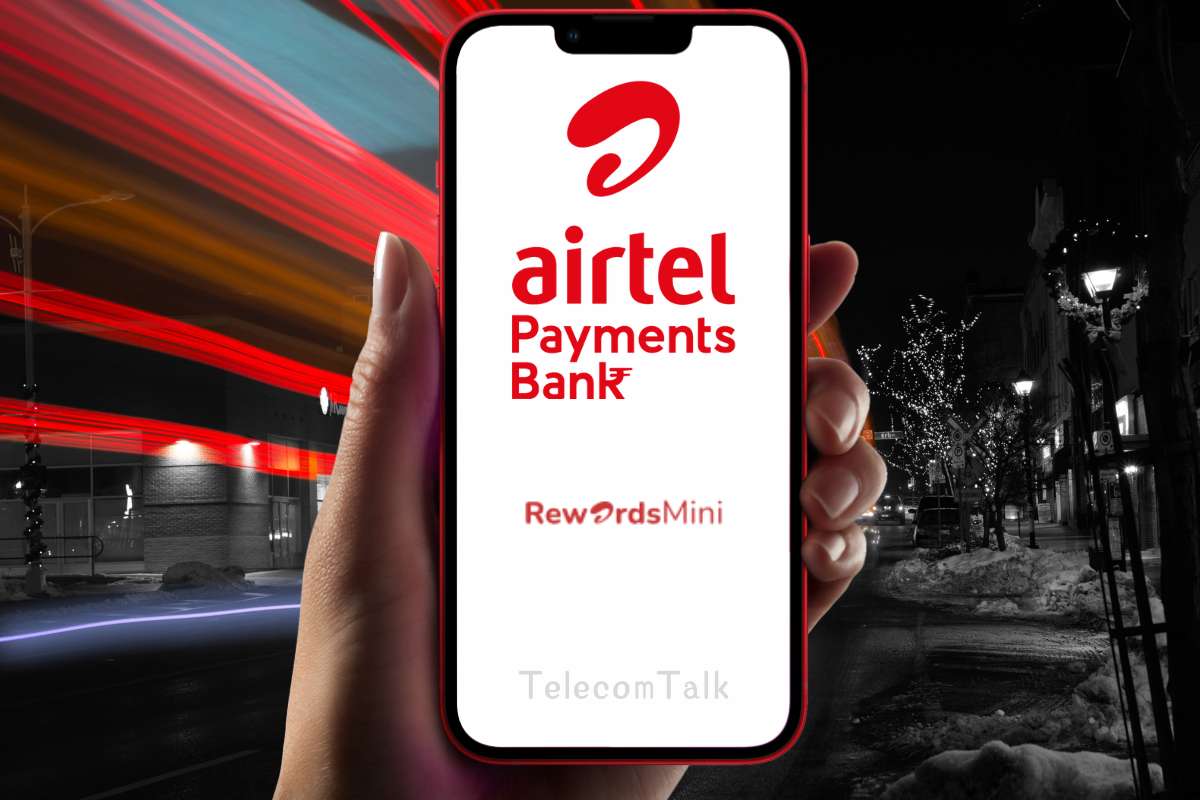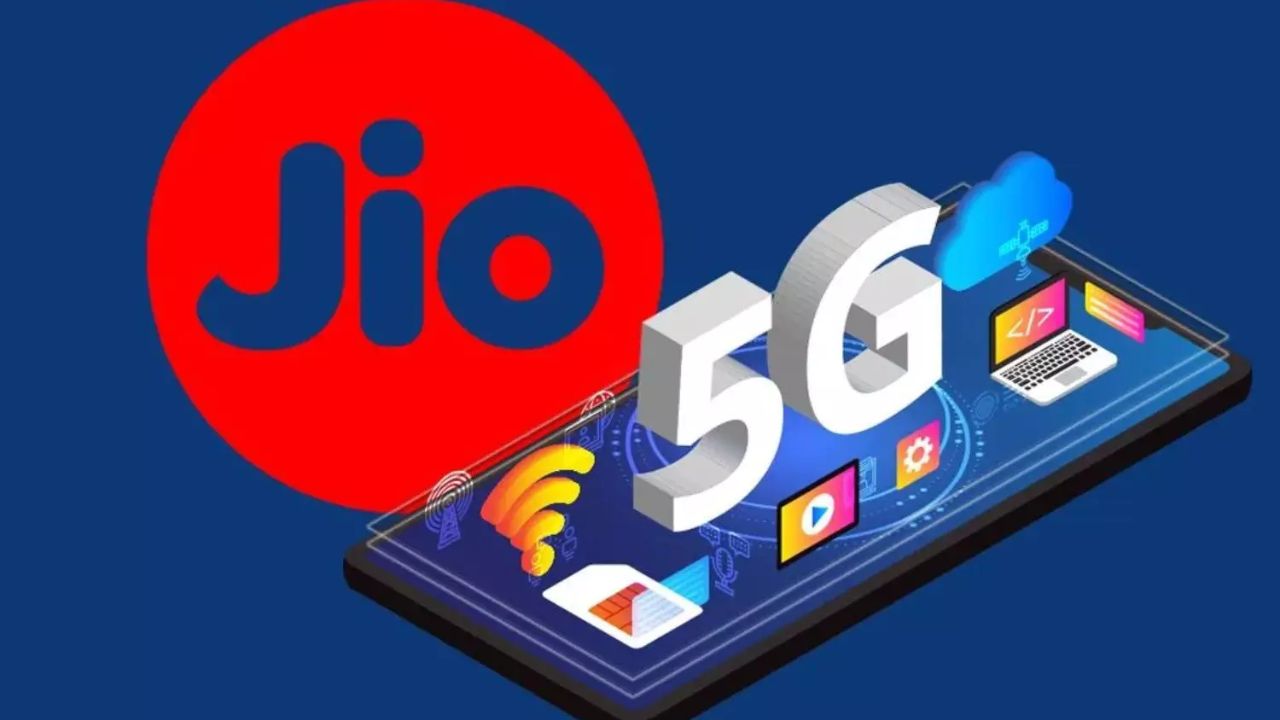The budget 5G segment in India demands compromise. A buyer spending around Rs. 12,000 to Rs. 15,000 must typically choose between raw processor speed, display quality, or camera features. Samsung, an established entity in the technology sector, often plays a slightly different game with its Galaxy M series. They prioritize experience and longevity. The latest model, the Samsung Galaxy M17 5G, is a clear expression of this strategy. It enters the competitive Indian market focusing on display quality and an almost unbelievable long-term software promise.
- Key Takeaways
- Design and Build: A Focus on Utility
- Display Experience
- Performance Analysis
- Camera Review: Focusing on the 50MP Main Sensor
- Battery Life
- Software and User Experience: One UI Core
- Audio and Connectivity Features
- Key Product Specifications (4GB + 128GB Variant)
- Verdict
- Frequently Asked Questions (FAQs)
I spent several weeks using the 4GB RAM and 128GB storage variant, which carries a price tag of Rs. 12,499. My test unit came in the Moonlight Silver finish. This review breaks down where the M17 5G excels and where it falls short, providing an honest assessment for an Indian consumer looking for a reliable daily driver.
Key Takeaways
- The 6.7-inch FHD+ Super AMOLED display is a major highlight, offering superior colour contrast and outdoor brightness compared to most phones in this price bracket.
- It features a 50MP primary camera with Optical Image Stabilization (OIS), a hardware component rarely found in the sub-Rs. 15,000 category.
- The device runs on the Samsung Exynos 1330 (5nm) chipset, which delivers stable, power-efficient performance for everyday use but lags behind rivals in sustained high-end gaming.
- Samsung provides an industry-leading software support policy: six major Android OS upgrades and six years of security updates.
- A large 5000mAh battery provides strong battery life, but the 25W wired charging speed is slow, and the charger must be purchased separately.
- The build is slim at 7.5 mm and includes an IP54 rating for protection against dust and splashes.
Design and Build: A Focus on Utility
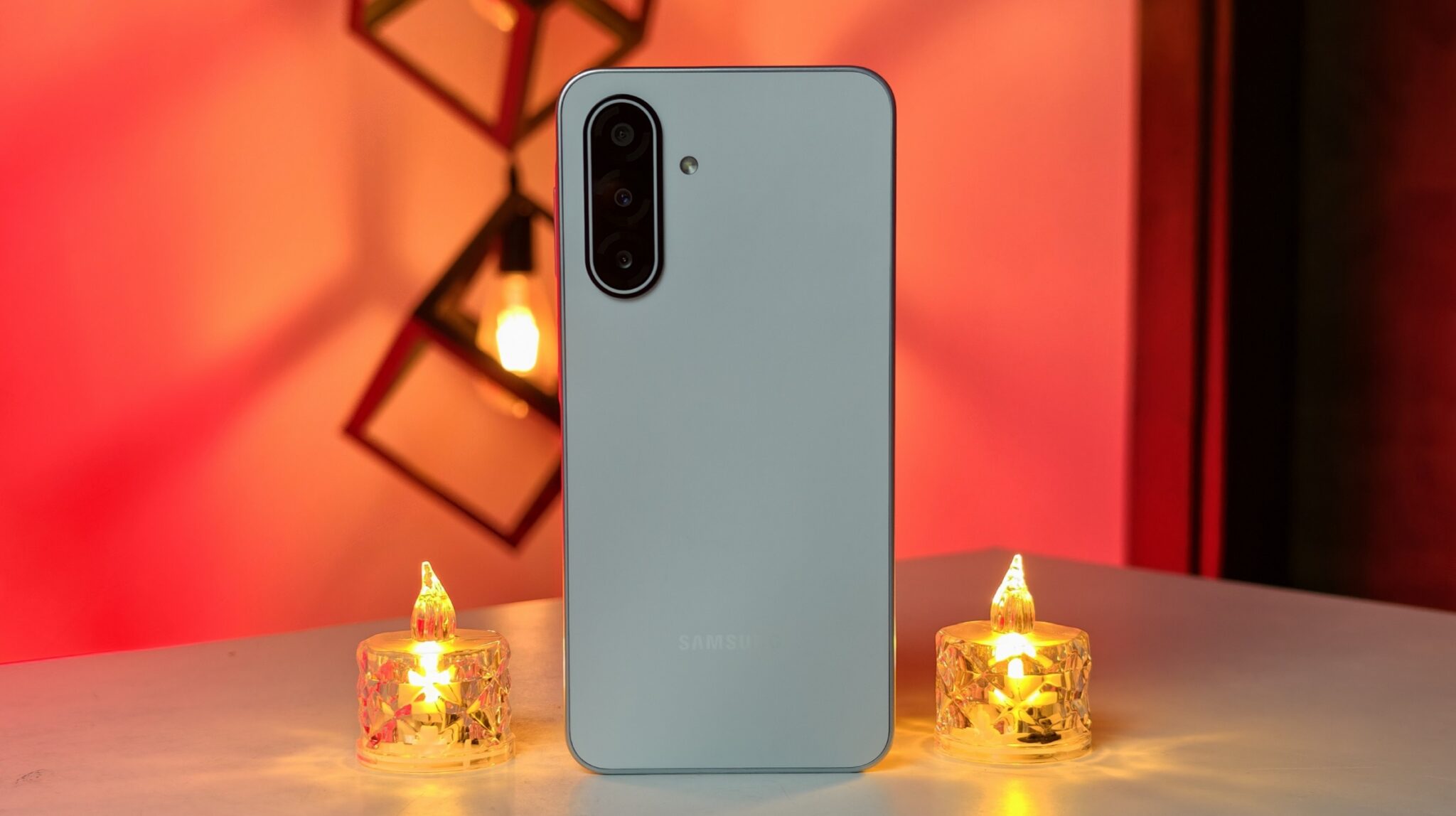
When I first unboxed the Galaxy M17 5G, its design immediately felt more refined than I expected from a budget phone. Measuring only 7.5 mm in thickness and weighing 192 grams, the phone is surprisingly slim and light for housing a 5000mAh battery. The feel is comfortable for one-handed use, avoiding the common bulky nature of many affordable 5G phones.
My Moonlight Silver unit has a subtle, matte plastic back panel. This finish is a practical choice as it resists fingerprints effectively, keeping the phone looking clean. The rear camera module is a simple vertical pill shape on the top left, giving it a familiar, minimalist Samsung look. The overall construction uses a plastic frame and back, but the fit and finish are tight, giving it a decent sense of sturdiness.
Samsung included a significant durability feature: the front display glass is protected by Corning Gorilla Glass Victus. This is typically reserved for more expensive phones and gives the user peace of mind against scratches and minor drops. Furthermore, the phone carries an IP54 rating. This rating is essential for a phone used in India, where dust and sudden splashes are common. It means the phone is protected against dust ingress and water splashing from any direction.
The power button on the side doubles as the physical fingerprint scanner. It sits naturally where my thumb rests, and the unlocking process is quick and reliable, though I felt the accompanying unlock animation could be a touch faster. The phone uses a hybrid dual-SIM slot, which means you have to choose between using a second Nano-SIM or a microSD card for storage expansion.
Display Experience

The display is unquestionably one of the Samsung Galaxy M17 5G’s strongest selling points. It features a large 6.7-inch Super AMOLED panel with a Full HD+ resolution (1080 x 2340 pixels).
The term Super AMOLED refers to Samsung’s proprietary display technology, where each pixel generates its own light. When a pixel needs to show black, it simply turns off, leading to true, perfect blacks and an infinite contrast ratio. Watching movies and viewing high-contrast images on this screen is a treat. The colors are vibrant and punchy, a trademark of Samsung panels, making the viewing experience very enjoyable.
The display also supports a 90Hz refresh rate. This means the screen refreshes 90 times every second. While some rivals offer 120Hz, the jump from the standard 60Hz to 90Hz provides a noticeable and pleasing fluidity when scrolling through web pages, social media, and the One UI interface.
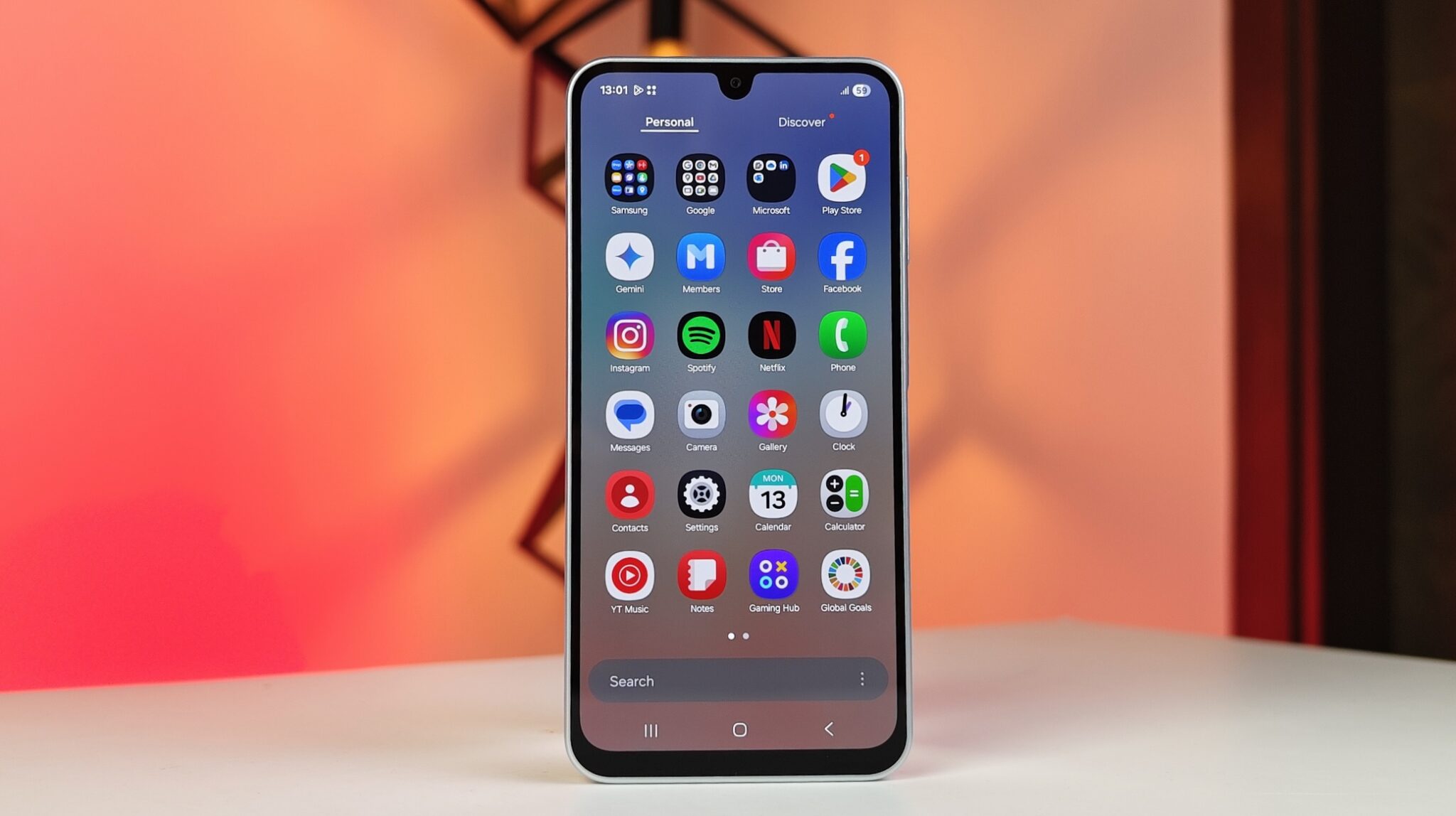
Crucially for outdoor usage in India, the screen has a high peak brightness of up to 1100 nits in High Brightness Mode (HBM). I took the phone out in the afternoon sun, and the screen remained clear enough to read text and navigate maps without squinting. This high brightness level makes the display usable in almost all lighting conditions.
The only visual aspect that dates the phone is the Infinity-U notch (a teardrop cutout) at the top of the display for the selfie camera. Many phones in this segment have moved to the smaller, more modern punch-hole style. Samsung should take a note to this and stop making their budget segment phones deliberately look bad.
Performance Analysis

Powering the device is the Exynos 1330 processor. This chipset is built by Samsung using an efficient 5-nanometer (5nm) fabrication process. The processor is an octa-core CPU, featuring two high-performance Cortex-A78 cores clocked at 2.4 GHz and six power-efficient Cortex-A55 cores running at 2.0 GHz. The graphics processing unit is the Mali-G68 MP2.
The choice of the 5nm Exynos 1330 suggests Samsung prioritized power efficiency and thermal stability over brute force. For typical daily tasks, the M17 5G is perfectly adequate. Applications like banking apps, WhatsApp, Chrome browsing, and media streaming all run smoothly without noticeable lag. The phone maintains a comfortable temperature even after long video calls or extended streaming sessions.

However, users who are keen on high-performance mobile gaming should manage their expectations. I tested games like Call of Duty Mobile and Battlegrounds Mobile India (BGMI). The processor handles these games best when the graphical settings are kept at Medium to Low. Pushing the settings to their maximum level results in frequent frame drops and stuttering.
The 4GB RAM variant I reviewed sometimes showed its limitation with multitasking. Opening multiple applications and switching between them often forced older apps to reload. Samsung offers a feature called RAM Plus, which uses a portion of the 128GB UFS 2.2 storage as virtual RAM, helping with background task management. Still, multitaskers might find the 6GB or 8GB RAM variants (priced at Rs. 13,999 and Rs. 15,499 respectively) offer a smoother overall experience. The UFS 2.2 storage standard offers respectable read and write speeds, which aids in quicker app loading times.
Camera Review: Focusing on the 50MP Main Sensor
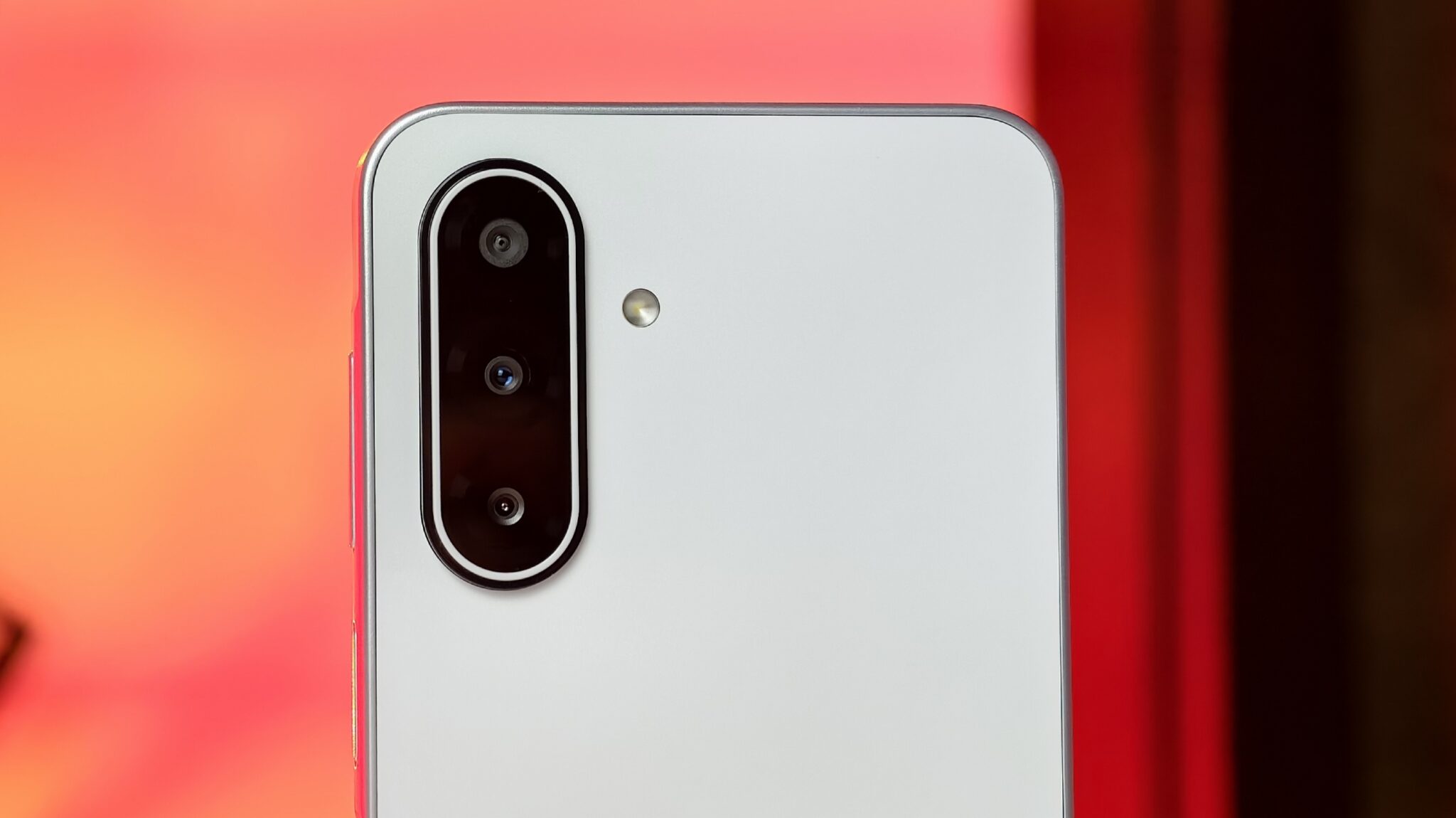
The camera setup is a compelling feature, headlined by the 50MP primary sensor with an f/1.8 aperture. The key hardware advantage here is the inclusion of Optical Image Stabilization (OIS).
OIS is a Must-Have
OIS is a mechanical system within the camera lens assembly that physically shifts components to compensate for the tiny movements of your hand. In a price segment where electronic image stabilization (EIS) is the norm, OIS stands out. It provides two critical benefits:
- Low-Light Clarity: OIS allows the shutter to stay open for longer periods to gather more light without the image becoming blurry due to hand movement. This results in brighter, clearer photos in dim indoor or nighttime settings.
- Video Smoothness: When recording video, OIS reduces the shaky, jerky motion that typically plagues budget phone videos. The M17 5G records video at up to 4K resolution at 30 frames per second (fps), and the OIS makes this footage much more stable than expected.
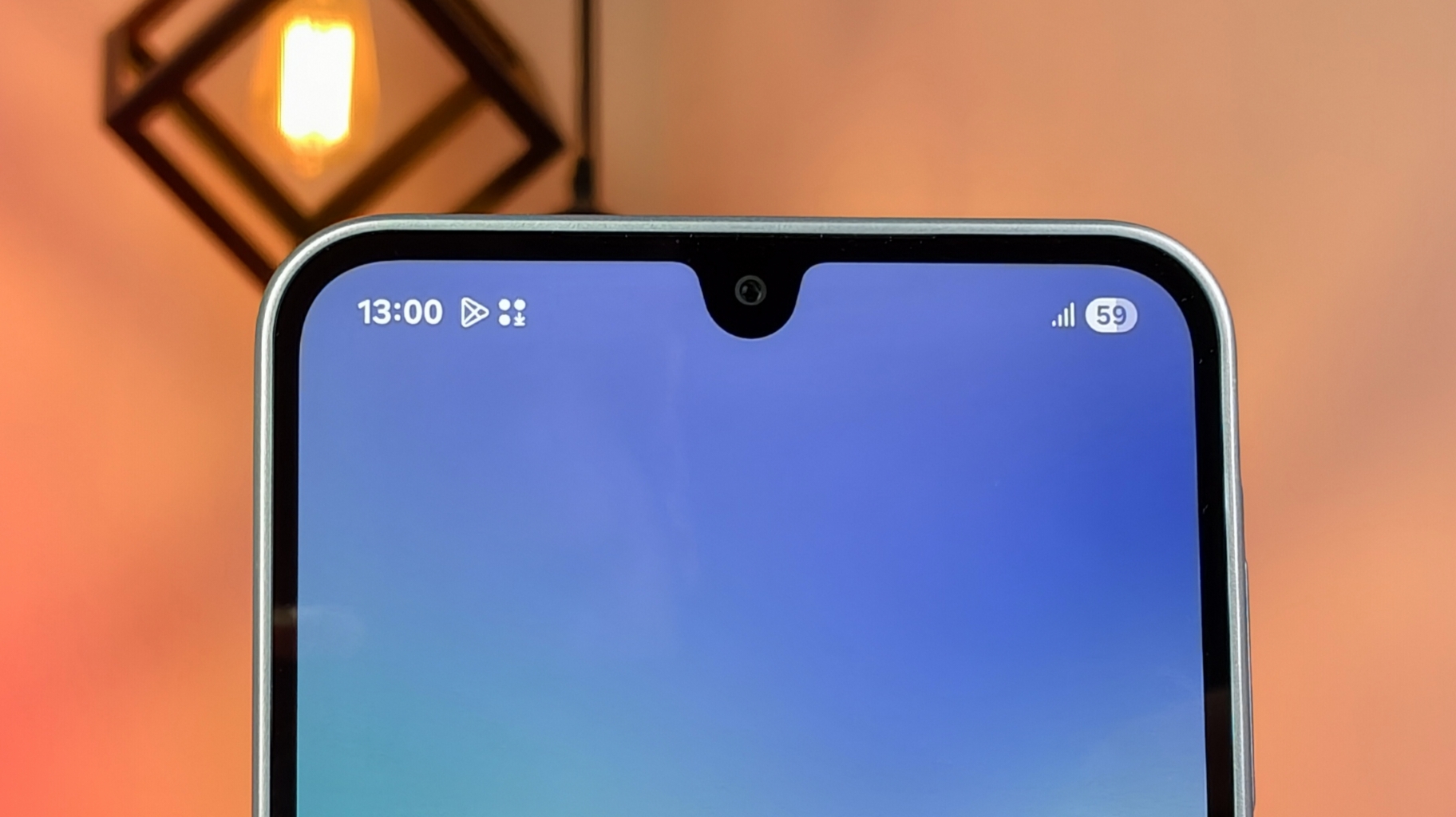
Photo Quality Analysis
In bright daylight, the 50MP main camera captures photos with good detail and a pleasing colour profile. Samsung’s colour science here is balanced, avoiding oversaturation while still making the images look appealing. Dynamic range is handled well, especially in challenging scenes with both deep shadows and bright areas.
The rest of the camera system is where the compromises start to appear. The phone includes a 5MP ultrawide lens and a 2MP macro lens.
The 5MP ultrawide is functional, letting you fit more content into the frame for landscapes or architecture shots. However, the image quality is noticeably softer, especially towards the edges, and the colours sometimes look different from the main sensor. It is useful only when you absolutely need the wider view.
The 2MP macro lens is a basic inclusion. Its low resolution and fixed focus make capturing a detailed close-up shot a trial-and-error process. I found myself rarely using it because the results lacked the sharpness needed for a good photo.
The 13MP front-facing camera delivers good selfies in well-lit conditions. Portrait mode provides decent subject separation, though in challenging indoor light, the sensor struggles, and noise quickly becomes apparent. The main value proposition of the camera remains the reliable, OIS-backed primary sensor.
Battery Life
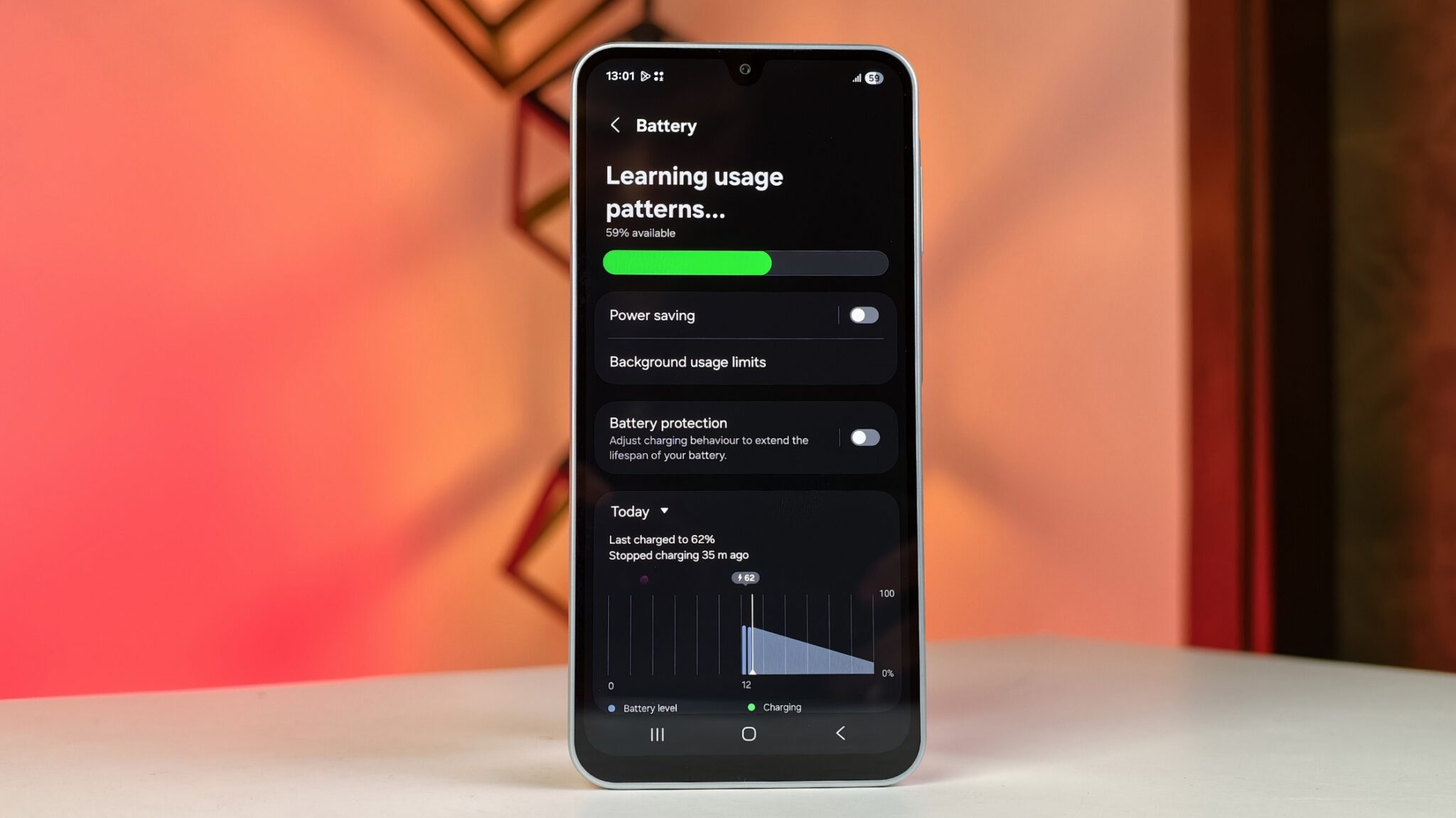
The phone is equipped with a 5000mAh battery, which is a generous size for this class. Thanks to the efficient 5nm Exynos 1330 chipset and the energy-sipping Super AMOLED display, the battery life is excellent.
During my testing, which included a mix of 5G browsing, social media use, hours of music playback via Bluetooth, and several calls, the M17 5G consistently lasted a full day with power to spare (often 20-30% remaining). On average, I recorded 6 to 7 hours of screen-on-time with the 90Hz refresh rate enabled. For the typical user, this phone easily stretches into a second day of use, which is a significant advantage.
The main drawback lies in the charging department. The M17 5G supports 25W wired fast charging. While the 25W standard is okay, it is slower than the 33W, 45W, or even 67W charging solutions offered by competing brands in the same price range.
The biggest issue for Indian buyers is that Samsung does not include the 25W power adapter in the box. You only get a USB Type-C cable. To benefit from the 25W fast charging speed, you must purchase a compatible charger separately. If you use a basic old charger, the phone can take over two hours to fully charge. With the 25W adapter, a full charge from 0 to 100% takes about 90 minutes. This hidden cost and time penalty are definite negatives for a budget-conscious consumer.
Software and User Experience: One UI Core
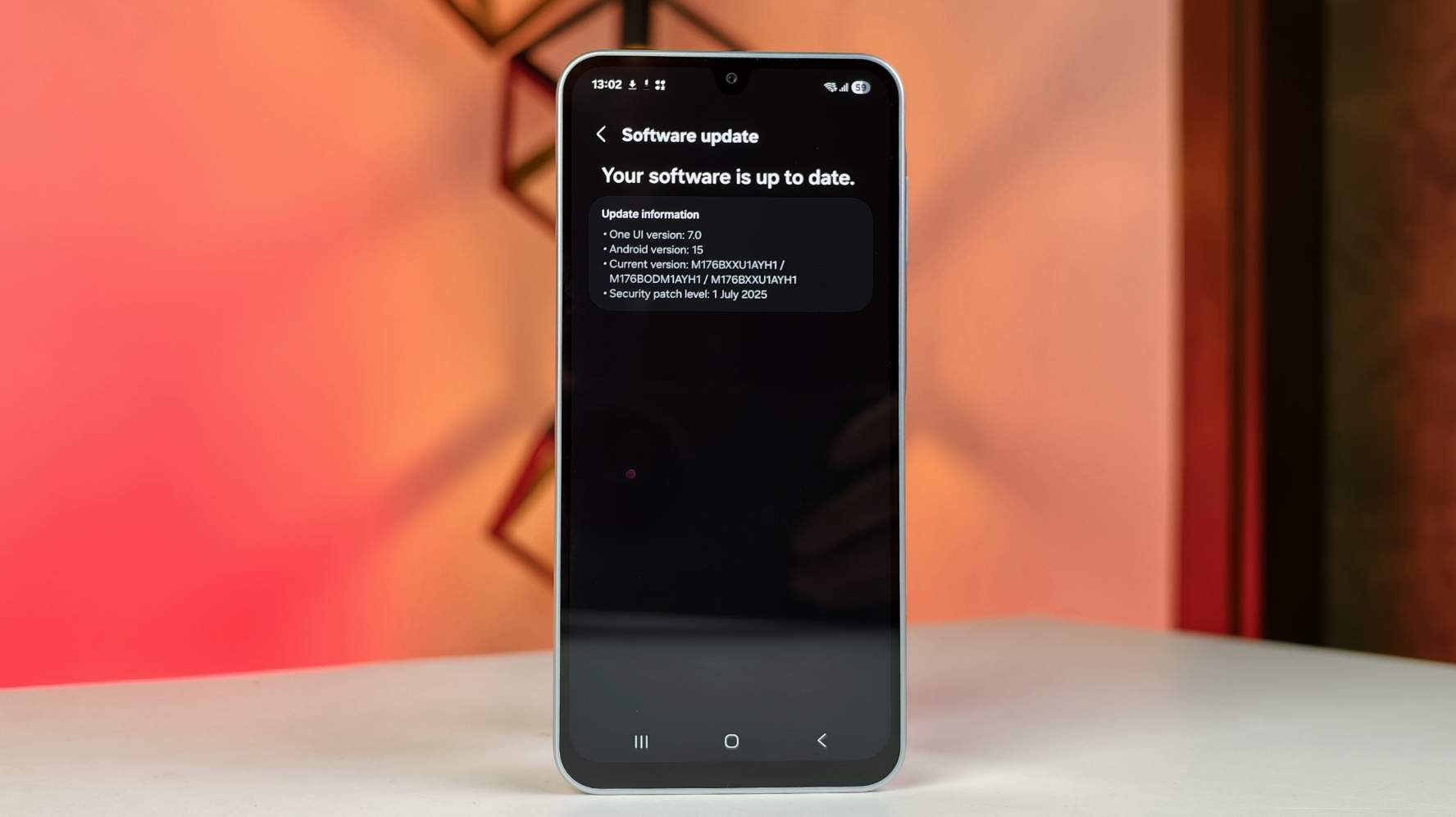
The software experience is the biggest reason why the Galaxy M17 5G is a future-proof choice in the budget space. It runs on One UI 7.0, which is based on Android 15. Samsung’s One UI is one of the more mature and feature-rich Android skins available, offering extensive customization and useful utilities.
The real game-changer here is Samsung’s six-year software support promise. The company has guaranteed six major Android OS upgrades and six years of security updates. No other manufacturer offers this level of commitment in the sub-Rs. 15,000 price segment.
This support is a huge benefit for the consumer. It means the phone will be compatible with new apps, maintain the latest security protocols, and run the newest Android features until 2031, or possibly longer. This longevity greatly increases the phone’s value over its competitors, many of which stop receiving major updates after two years.
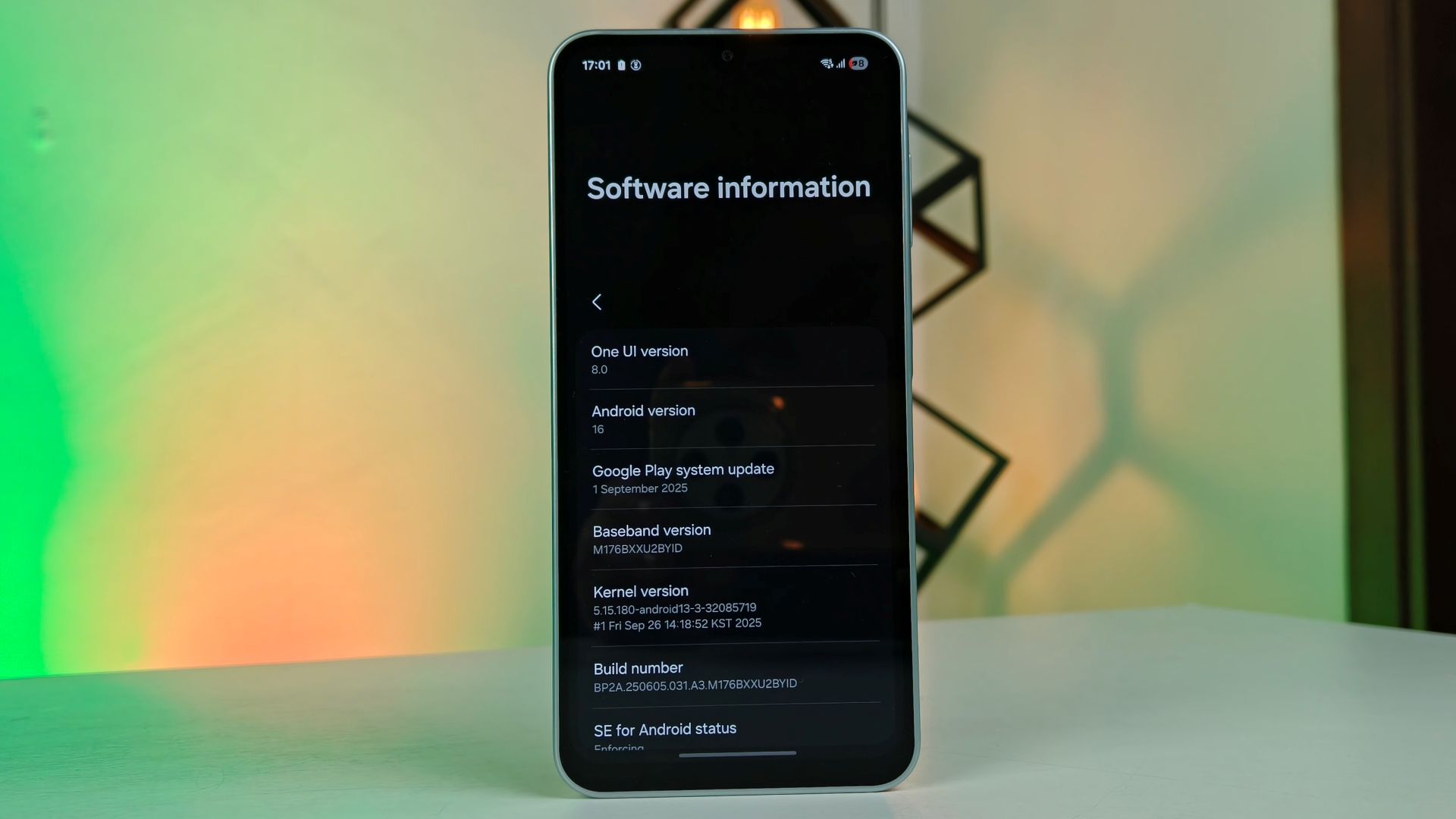
Update: Samsung One UI 8.0 update is now available for the Galaxy M17 5G. It is a very welcoming move which has made the phone more stable and fluid.
Audio and Connectivity Features
The Galaxy M17 5G is future-ready in terms of network connectivity, supporting all the major 5G bands in India. I experienced reliable 5G reception and stable calls, which were further improved by the Voice Focus feature in One UI, which helps to isolate the speaker’s voice by cutting down ambient noise.
The phone lacks a 3.5mm audio jack, a standard feature often expected in this price bracket. You must rely on a USB-C adapter or wireless headphones.
For media consumption, the phone has a single bottom-firing speaker. It is loud enough for ringtones and basic video viewing but lacks the stereo separation and depth needed for a rich audio experience in music or gaming.
A definite positive for the modern user is the inclusion of NFC (Near-Field Communication). This allows for quick, secure contactless payments using Samsung Wallet (or Samsung Pay), a feature often omitted in budget phones and highly useful for digital transactions. The phone also supports Wi-Fi 5 (802.11ac) and Bluetooth 5.3, providing good wireless connectivity.
Key Product Specifications (4GB + 128GB Variant)
| Features | Details |
| Model | Samsung Galaxy M17 5G |
| Price in India (Base Variant) | Rs. 12,499 |
| Colour (Reviewed) | Moonlight Silver |
| Chipset | Samsung Exynos 1330 (5nm) |
| RAM & Storage (Reviewed) | 4GB RAM + 128GB Internal Storage (UFS 2.2) |
| Display | 6.7-inch FHD+ (1080 x 2340) Super AMOLED |
| Refresh Rate/Brightness | 90Hz, 1100 nits Peak Brightness (HBM) |
| Protection | Corning Gorilla Glass Victus |
| Rear Camera | 50MP Primary (f/1.8, OIS) + 5MP Ultrawide + 2MP Macro |
| Front Camera | 13MP (f/2.0) |
| Battery | 5000mAh |
| Charging | 25W Wired Fast Charging (Adapter not included) |
| Operating System | Android 15 with One UI 7.0 |
| Software Support | 6 Generations of OS Upgrades + 6 Years of Security Updates |
| Durability Rating | IP54 Dust and Splash Resistant |
| Connectivity | 5G, Wi-Fi 5, Bluetooth 5.3, NFC (Samsung Wallet) |
| Dimensions/Weight | 164.4 x 77.9 x 7.5 mm / 192g |
| SIM Slot | Hybrid Dual SIM (Nano + Nano/MicroSD) |
Verdict
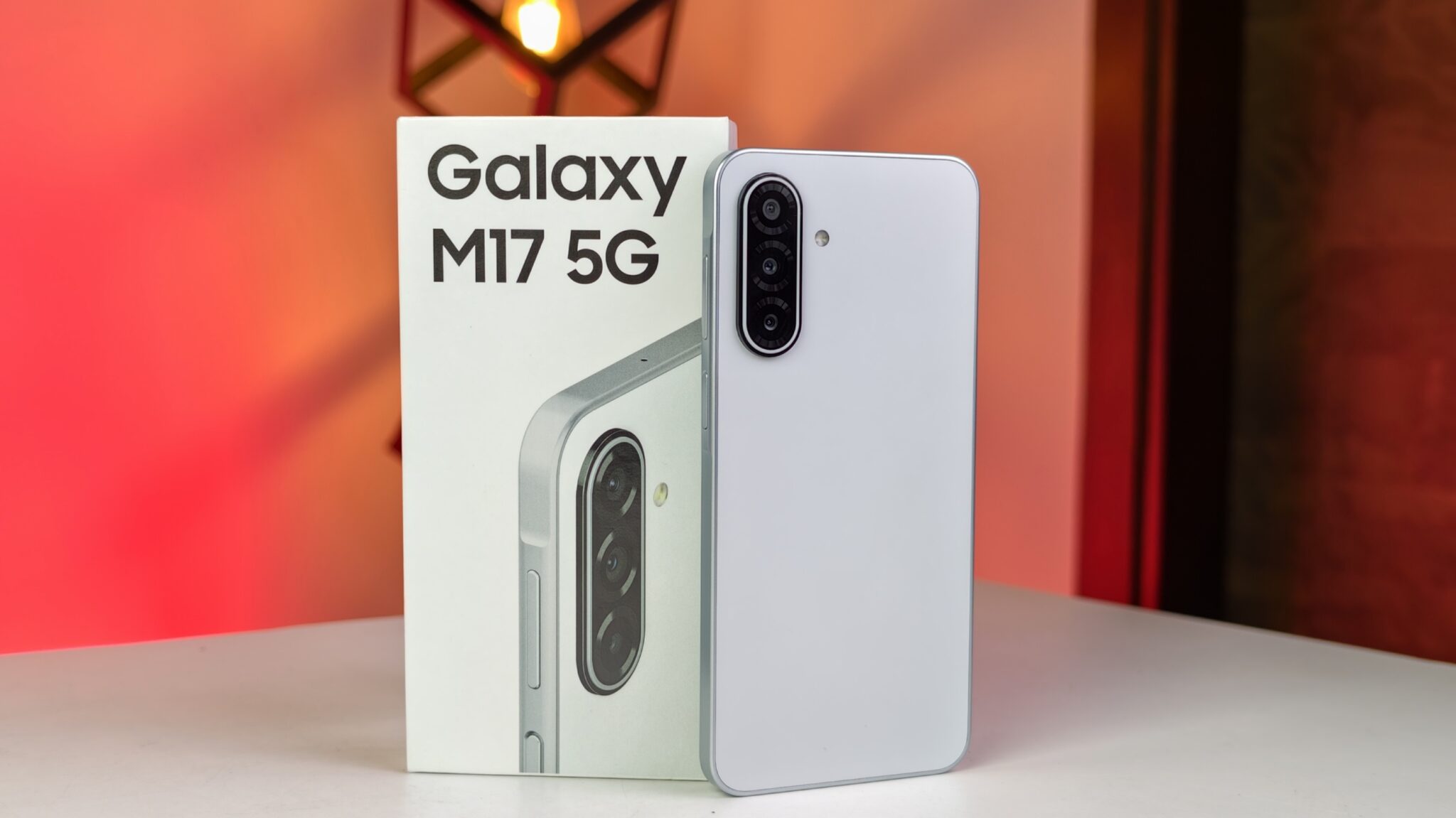
The Samsung Galaxy M17 5G is a strong statement from Samsung in the budget category. It is a device that is clearly built for the long haul, appealing to the user who values stability, quality, and longevity over blazing-fast synthetic benchmark scores.
I see the M17 5G as an intelligent compromise. It gives you the best display, a truly useful camera feature (OIS), and a software promise that essentially guarantees the phone’s relevance for up to six years. These are features that genuinely affect the daily, long-term experience. For example, the Super AMOLED screen makes every interaction pleasant, and the OIS camera captures good-looking, steady images and video for social media or family memories.
The shortcomings are mostly centered on performance-per-rupee comparisons. Buyers seeking a pure gaming machine will find faster chips and quicker charging solutions from other brands. The missing charger is a definite point of friction for the consumer.
But for the typical Indian mobile user – the student, the busy professional, or anyone needing a reliable phone for 5G, banking, and content consumption – the Samsung Galaxy M17 5G (especially the 4GB+128GB Moonlight Silver variant at Rs. 12,499) represents a secure investment. It might not win every speed test, but its durability, gorgeous display, and six-year support make it one of the most practical and trustworthy budget phones you can buy today.
Frequently Asked Questions (FAQs)
Q1. How does the Exynos 1330 handle daily app usage and multitasking on the Galaxy M17 5G?
A1. The Exynos 1330, being a 5nm chip, is designed for power efficiency and stable performance. It handles common daily applications like social media, email, streaming video, and voice calls very smoothly. Multitasking is generally fine, but users of the 4GB RAM variant might notice slower reloading of apps if they jump between many heavy applications. Overall, it is a reliable processor for non-intensive daily use.
Q2. What is the most important feature of the Galaxy M17 5G camera?
A2. The most important feature of the camera system is the Optical Image Stabilization (OIS) on the 50MP main lens. OIS is a physical stabilizer that significantly reduces blur in photos taken in low light and greatly improves the smoothness and stability of video recordings compared to standard electronic stabilization (EIS) systems.
Q3. Does the Samsung Galaxy M17 5G support fast charging, and is the adapter included?
A3. The Galaxy M17 5G supports 25W wired fast charging. However, the charger adapter is not included in the box, which is a common practice for Samsung now. You will need to purchase a 25W USB-C charger separately to utilize the fast charging speed, or rely on a slower charger you already own.
Q4. How long will Samsung provide software updates for the Galaxy M17 5G?
A4. Samsung has committed to providing an industry-leading six major Android OS version upgrades and six years of security updates for the Galaxy M17 5G. This is an exceptional policy in the budget segment and ensures the phone remains modern and secure for an extended period, potentially until 2031.
Q5. Is the Galaxy M17 5G good for playing games like BGMI or Call of Duty?
A5. The Galaxy M17 5G can run popular games like BGMI and Call of Duty Mobile. However, because the Exynos 1330 prioritizes efficiency, you should play these games using Medium or low graphical settings. Attempting to run them on the highest settings will lead to noticeable frame rate drops and stuttering. It is a capable phone for casual gaming, not competitive gaming.
Q6. What protection does the display of the Samsung Galaxy M17 5G have?
A6. The 6.7-inch Super AMOLED display is protected by Corning Gorilla Glass Victus. This is one of Corning’s tougher glass solutions, offering solid resistance against scratches from daily use and protection from damage in case of minor drops. The phone also has an IP54 rating for splash and dust resistance.


